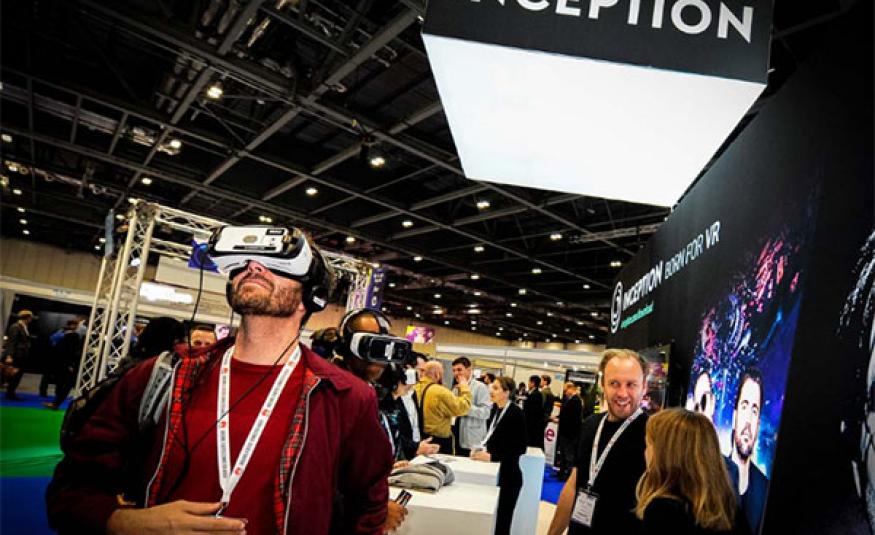UK-based provider of exhibitions stands and displays, Skyline Whitespace, looks at key technology trends in the global events industry, including the emergence of customer mapping, how AR is changing and the use of drones.
Adapt with Augmented Reality
If you want to connect on a more immersive level with your target audience, Augmented Reality is a great way to achieve this. AR lets you hide content behind marker images that can be included in your event displays posters or exhibition stand graphics. It’s a fresh way for visitors to interact with your brand. It’s especially useful if your products are too large to take to the show.
All the visitors have to do is scan a trigger image with a smart device et voila: a 360-degree reconstruction of your product appears.
A virtual world ahead
Virtual Reality is an immersive, computer-generated artificial environment that attracts attention and creates a great talking point. There are many new virtual reality headsets on the market today that allow users to completely immerse themselves in the 3D world and this event technology offers a great way to explain complicated systems or bring large-scale products to life. Your headsets can be preloaded with existing 3D content or you can create your own immersive environments.
Keeping track of participants
Beacon technology, also called iBeacon or location mapping, is a technology developed to track user’s position on a micro-local scale and push notifications and contextual advertisements to them based on their location. Smart devices communicate with beacons placed in the physical world through a Bluetooth signal and react accordingly.
It is reported that 565m beacons will be shipped annually by 2021.
The Beacon technology offers great benefits to the events industry. It can help you identifying the traffic flow on your stand, identify low and high traffic areas through heat maps, which are useful when planning stand layouts. Another trending application is the potential offer of personalised deals and messages to visitors. You can even check-in attendees.
Unique projection adverting
Projection mapping aka video mapping or spatial augmented reality is a projection technology that maps light onto real-world surfaces. The software spatially maps a 2D or 3D surface and interacts with the projector to fit the image onto a physical object and align with its features.
The objects become a canvas for 3D art.
Spatial augmented reality can be used for advertising, live events, product launches or decoration. It adds extra dimensions and optical illusions that make static objects animated and playful. Many projection mappings are able to mimic people’s movements and deliver memorable experiences for any audience.
This event technology stands out above the entire exhibition hall and is becoming more affordable. With the popularity of projection mapping increasing, more and more companies such as BMW, Samsung, adidas and Disney decide to incorporate it into their campaigns to 'wow' their audiences.
A Different perspective with drones
As drone technology develops, more industries are adding it into their practices. The events industry in particular is enjoying the new thrills and new perspectives that drones can add to events and exhibitions. They are mostly used as flying cameras to capture footage.
Drones are great for capturing action of fast-pace events like sports matches or races.
It can also provide a different perspective of other events including indoor and outdoor expos. The footage it captures can be streamed directly to screens at the venue or live streamed to any of your SM channels to engage with attendees.
Drones can also be used as an attraction and perform aerial stunts at an event or trade show. It’s a great event technology trend, but please do remember that drones should always be flown in a safe manner! You will probably also need UK CAA permissions or a license to fly them commercially.
For more information, click here.






